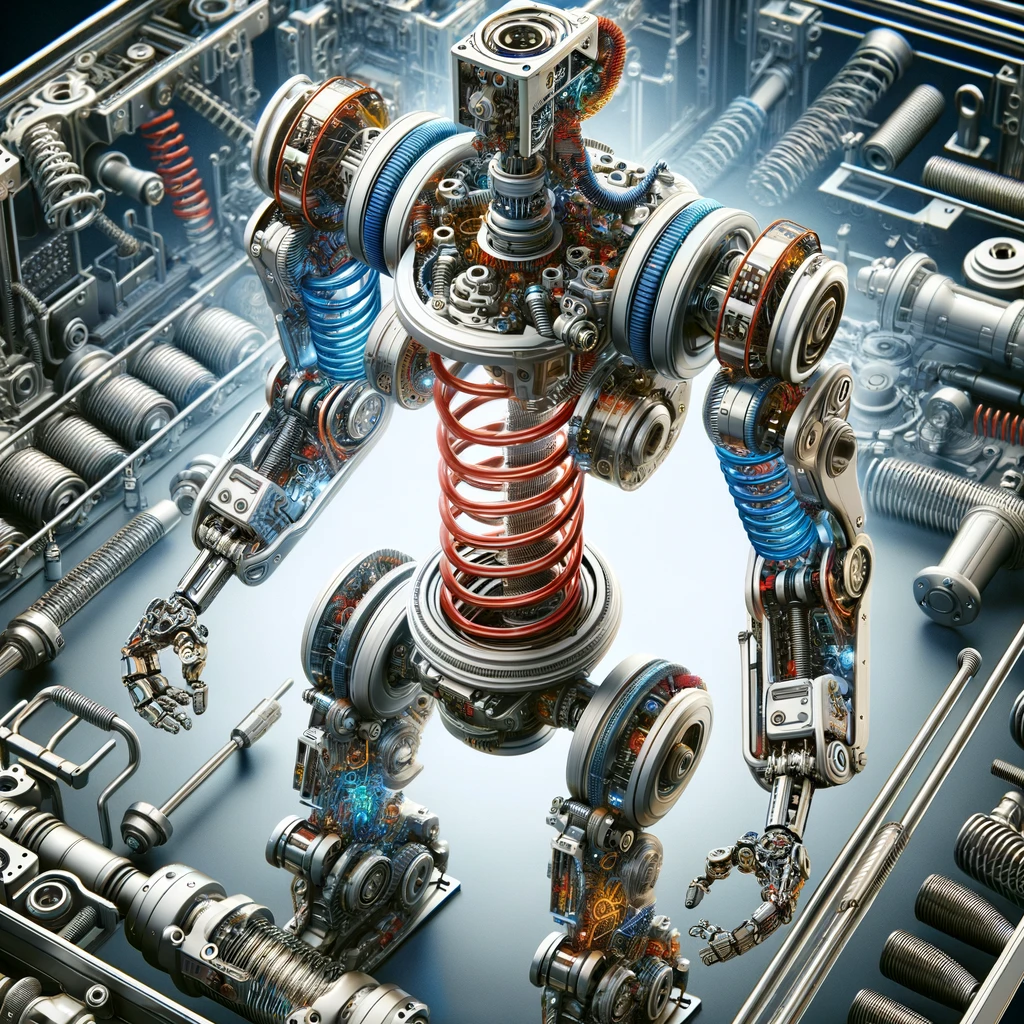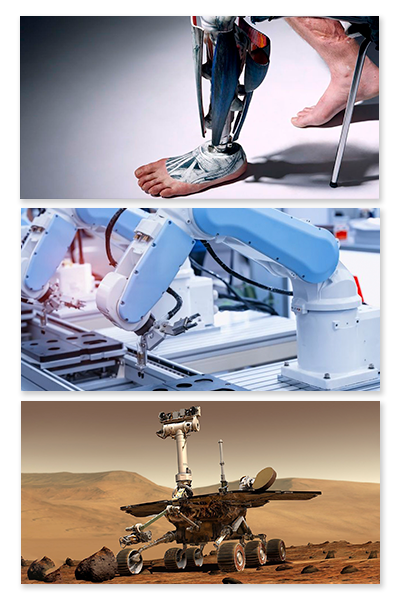The Silent Heroes: How Springs are Powering the Robotics Revolution
The Silent Heroes: How Springs are Powering the Robotics Revolution


In the dynamic world of robotics, attention often gravitates towards the latest in software algorithms, artificial intelligence breakthroughs, and state-of-the-art electronic components. However, lurking within the shadows of these technological giants, springs — those seemingly simple yet ingeniously versatile mechanical devices — play a pivotal role in the anatomy of robots. Offering unmatched precision, remarkable energy efficiency, and steadfast reliability, springs are the unsung heroes of robotic movement and functionality. This exploration ventures deep into the history, application, and promising future of springs in robotics, illuminating their critical contributions through vivid examples, design challenges, and the transformative potential of tools like Acxess Spring's 3D CAD models, 3D Blueprints, and Online Spring Force Tester.
Historical Context and Evolution
The inception of springs in machinery can be traced back millennia, with their origins predating the industrial age. Ancient civilizations recognized the potential of elastic materials to store energy, but it was the advent of the industrial revolution that catalyzed the proliferation of springs in mechanical devices. Fast-forward to the mid-20th century, the dawn of robotics emerged, and with it, springs found their place as indispensable components. Mimicking the function of muscle fibers, springs in robots serve to absorb shock, maintain tension, and facilitate the precise movement of parts. This historical journey from simple mechanical aids to critical components in advanced robotics underscores the enduring importance of springs across centuries of technological evolution.




The Role of Springs in Modern Robotics
In the complex machinery of modern robotics, springs fulfill several vital functions. They are the backbone of energy management, acting as reservoirs that store mechanical energy when a robot part moves against a force and release it to aid in the return movement. This dual role significantly reduces the energy demand on motors and actuaries, enhancing the robot's energy efficiency. Beyond energy conservation, springs contribute to the precision and durability of robotic systems. They ensure smooth operation by absorbing shocks and maintaining tension within mechanical assemblies, a critical factor in industrial robots that perform high-precision tasks. The silent work of springs, hidden within the joints and limbs of robots, is fundamental to the seamless integration and longevity of these technological marvels.
Case Studies and Examples
- Prosthetic Limbs: The evolution of prosthetic technology showcases springs in a starring role, enabling amputees to achieve a more natural gait and greater comfort. Springs integrated into prosthetic designs store and release energy with each step, mimicking the elastic properties of muscle and tendon in human limbs. This not only improves the wearer's mobility but also conserves energy, making each movement more efficient and life-like.
- Industrial Robots: In the realm of manufacturing, robotic arms equipped with springs demonstrate enhanced performance and safety. Springs facilitate precise control over movements, crucial for tasks requiring high accuracy, and absorb shocks, protecting both the machinery and handled materials from damage. This application underscores the role of springs in improving productivity and ensuring the safety of high-speed industrial processes.
- Exploration Rovers: The harsh and unpredictable terrain of celestial bodies like Mars presents unique challenges to mobility. NASA's rovers, such as Perseverance, rely on spring-based suspension systems to navigate these environments effectively. These systems allow the rovers to adjust to uneven surfaces, ensuring stability and longevity in conditions where maintenance is impossible. This example highlights the durability and adaptability of spring mechanisms in some of the most extreme environments known to man.


Design Challenges
Designing springs for robotic applications is a multifaceted engineering challenge. It requires a deep understanding of the forces at play and the environment in which the robot will operate. The choice of material, for instance, impacts the spring's elasticity, strength, and longevity, while the dimensions and shape determine its force characteristics and energy storage capacity. Engineers must also consider the wear and tear on springs through repeated use, ensuring that they maintain their properties over time. Furthermore, the drive towards miniaturization and efficiency in robotics calls for springs that are not only effective but also lightweight and compact. Navigating these complex considerations requires a blend of engineering expertise, innovative design, and advanced testing and prototyping tools.


Leveraging Acxess Spring's Tools for Innovation
In the quest to meet these design challenges, Acxess Spring's suite of advanced tools like Spring Creator 5.0 offers invaluable resources for robotics engineers and designers. The 3D CAD tool enables the creation of custom spring designs, allowing for rapid iteration and optimization of spring parameters to meet specific application needs. This virtual prototyping capability saves time and resources, accelerating the development process. The 3D Blueprints tool complements this by providing detailed models for further analysis and integration into larger mechanical systems. Finally, the Online Spring Force Tester is a critical asset for validating the performance of springs, ensuring that they deliver the required force characteristics with precision. Together, these tools form a comprehensive ecosystem that supports the iterative design, testing, and implementation of springs in robotics, paving the way for innovations that were once beyond reach.
The Future of Springs in Robotics
As we stand on the brink of a new era in robotics, the potential for springs is vast and largely untapped. Innovations in material science, such as the development of shape-memory alloys, promise springs with unprecedented performance capabilities. These materials can "remember" their original shape, enabling springs that can adapt their stiffness in response to environmental conditions or operational demands. This adaptability opens new avenues for creating more efficient, durable, and versatile robotic systems. As robots become increasingly integrated into various aspects of daily life, from healthcare to manufacturing and beyond, the demand for sophisticated mechanical components like springs will only escalate. The collaboration between robotics innovators and spring manufacturers, facilitated by advanced design and testing tools, is key to unlocking the full potential of springs in this technological revolution.
Conclusion
While the allure of software and electronics often dominates discussions about robotics, the mechanical components, particularly springs, play an equally crucial role. From enhancing energy efficiency to enabling precise control and durability, springs are foundational to the advancements in robotics. As we look to the future, the synergy between cutting-edge design tools and innovative spring technology holds the promise of propelling robotics to new heights. Through the continued exploration and application of springs, we can anticipate the emergence of robotic systems that are more capable, efficient, and integrated into our lives than ever before, with the humble spring remaining at the heart of this ongoing technological evolution.





